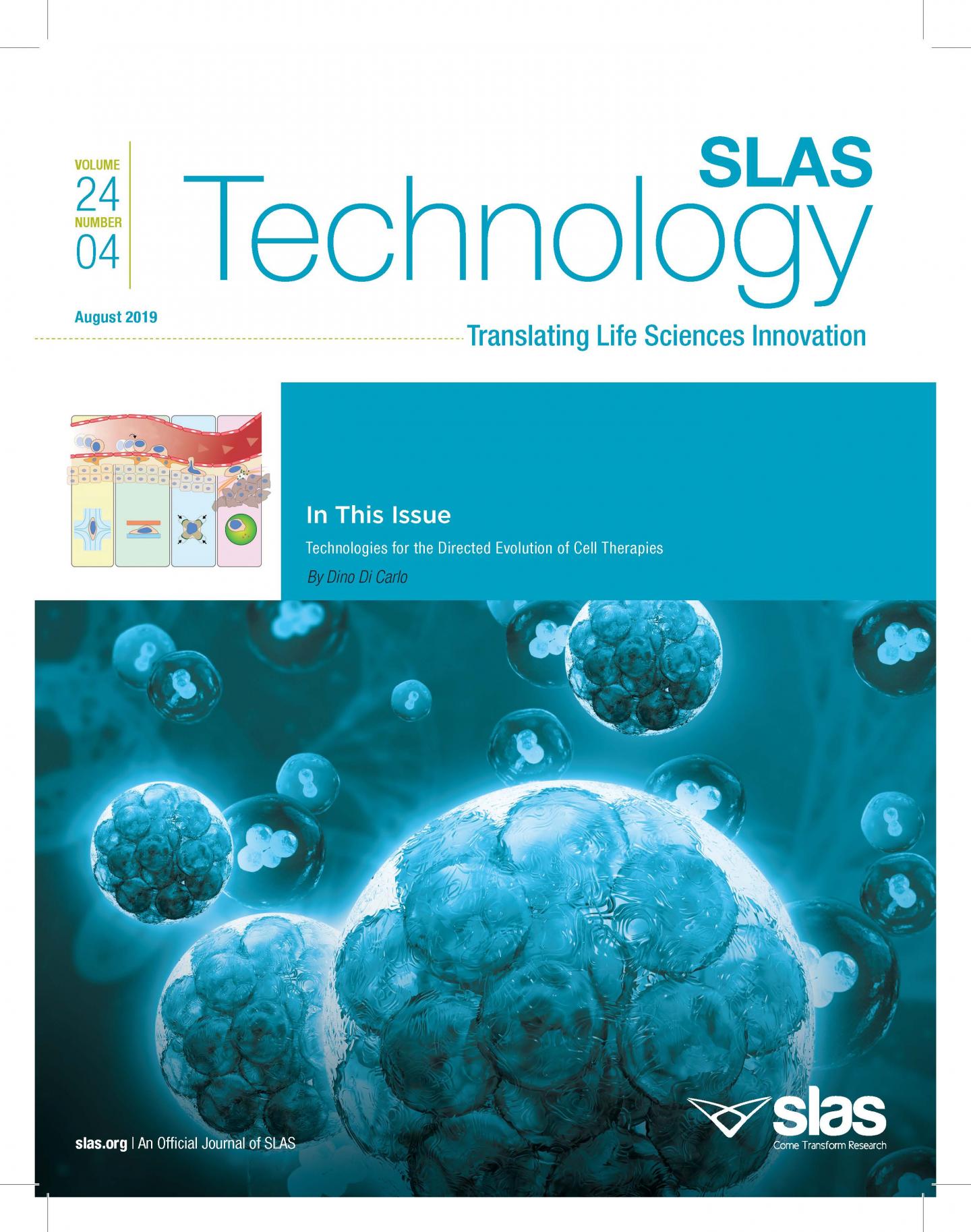August’s SLAS Technology edition features cover article, ‘Technologies for the Directed Evolution of Cell Therapies’

Credit: David James Group
Oak Brook, IL – The August edition of SLAS Technology features the cover article, “Technologies for the Directed Evolution of Cell Therapies,” a review featured in the journal’s March 2019 edition. The research, led by Dino Di Carlo, Ph.D., (University of California Los Angeles) highlights how the next generation of therapies are moving beyond the use of small molecules and proteins to using whole cells.
In the review, Di Carlo highlights the importance of automation tools in the selection of cells with unique properties and therapeutically beneficial traits to help drive the rise of cell therapies in the clinic. “Directed evolution of proteins with unique functions and stability was recognized with the Nobel Prize in 2018, and many molecular therapeutics, such as therapeutic antibodies, rely on evolutionary processes for their development,” says Di Carlo. “Cell therapies are rising as a third pillar of modern medicine along with molecular and gene therapies, with exciting opportunities given the ability of cells to sense and respond to the environment in both chemical and physical manners.”
In contrast, the article also discusses the current lack of fundamental knowledge to engineer complex traits within cells. Di Carlo argues that researchers should make use of directed evolution processes of mutagenesis (epigenetic or genetic) and selection to evolve complex traits of importance for new cell therapies that can, for example, target and kill solid tumors more effectively. He identifies specific traits like cell secretion, ability to apply force, deformability, and adhesiveness as unique traits that would be important to enable infiltration and killing of solid tumors.
Emerging tools such as image-activated cell sorters and cell secretion-based sorting using droplet microfluidics are featured as ways to potentially enable high-throughput automation technologies. Di Carlo indicates that with high-throughput selection tools and directed evolution processes applied to cells, researchers could accelerate the development of cellular products with extreme therapeutic benefit.
###
Di Carlo is the vice chair of the Department of Bioengineering at UCLA. His recent work extends into fields of biomedicine including directed evolution of cells, cell analysis for rapid diagnostics, mechanomedicine, next generation biomaterials and phenotypic drug screening.
Access to his article in August’s edition of SLAS Technology is available at http://journals.
SLAS (Society for Laboratory Automation and Screening) is an international community of 19,000 professionals and students dedicated to life sciences discovery and technology. The SLAS mission is to bring together researchers in academia, industry and government to advance life sciences discovery and technology via education, knowledge exchange and global community building.
SLAS Technology: 2017 Impact Factor 2.632. Editor-in-Chief Edward Kai-Hua Chow, Ph.D., National University of Singapore (Singapore). SLAS Technology (Translating Life Sciences Innovation) was previously published (1996-2016) as the Journal of Laboratory Automation (JALA).
SLAS Discovery: 2017 Impact Factor 2.355. Editor-in-Chief Robert M. Campbell, Ph.D., Eli Lilly and Company, Indianapolis, IN (USA). SLAS Discovery (Advancing Life Sciences R&D) was previously published (1996-2016) as the Journal of Biomolecular Screening (JBS).
Media Contact
Jill Hronek
[email protected]
Original Source
https:/
Related Journal Article
http://dx.



